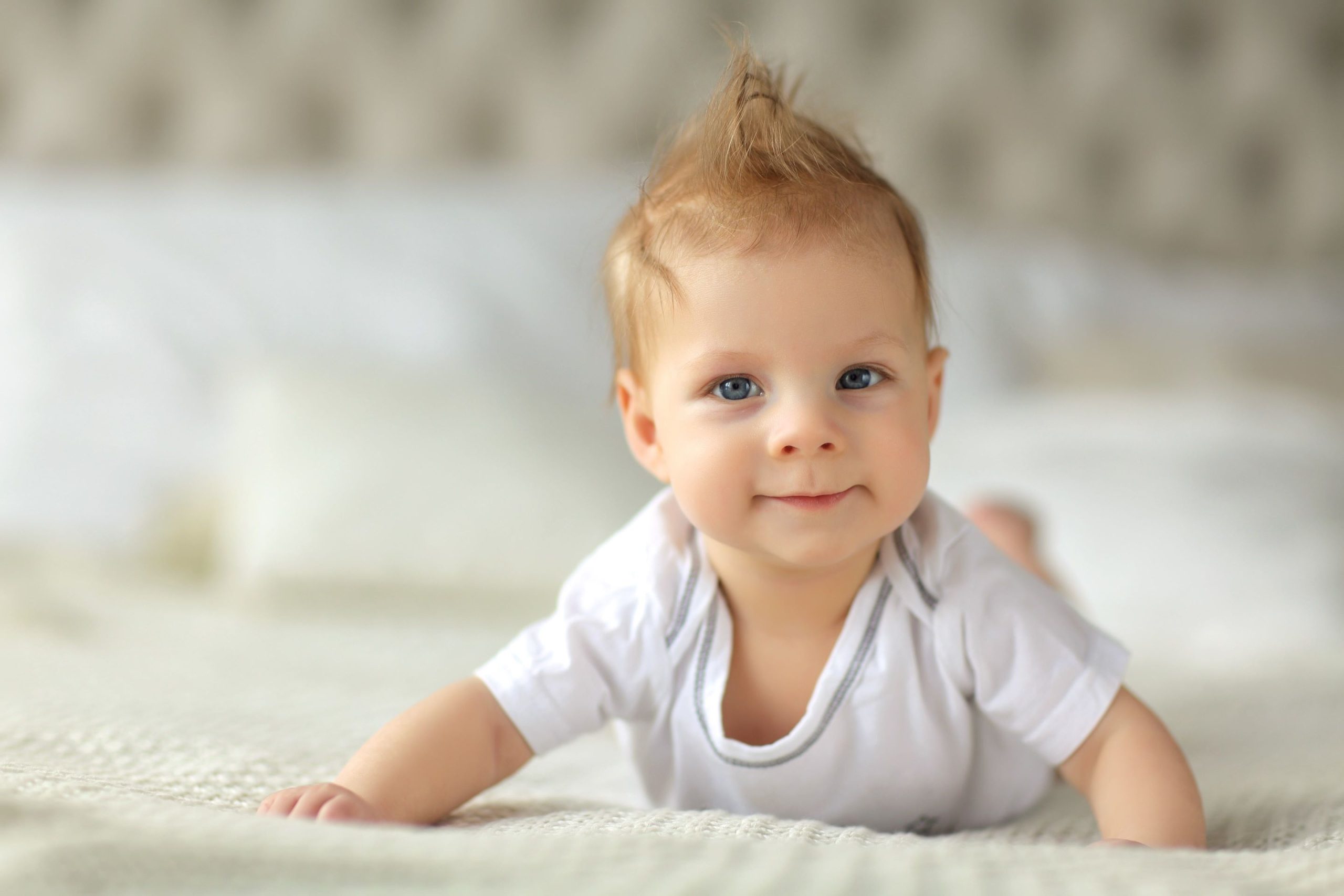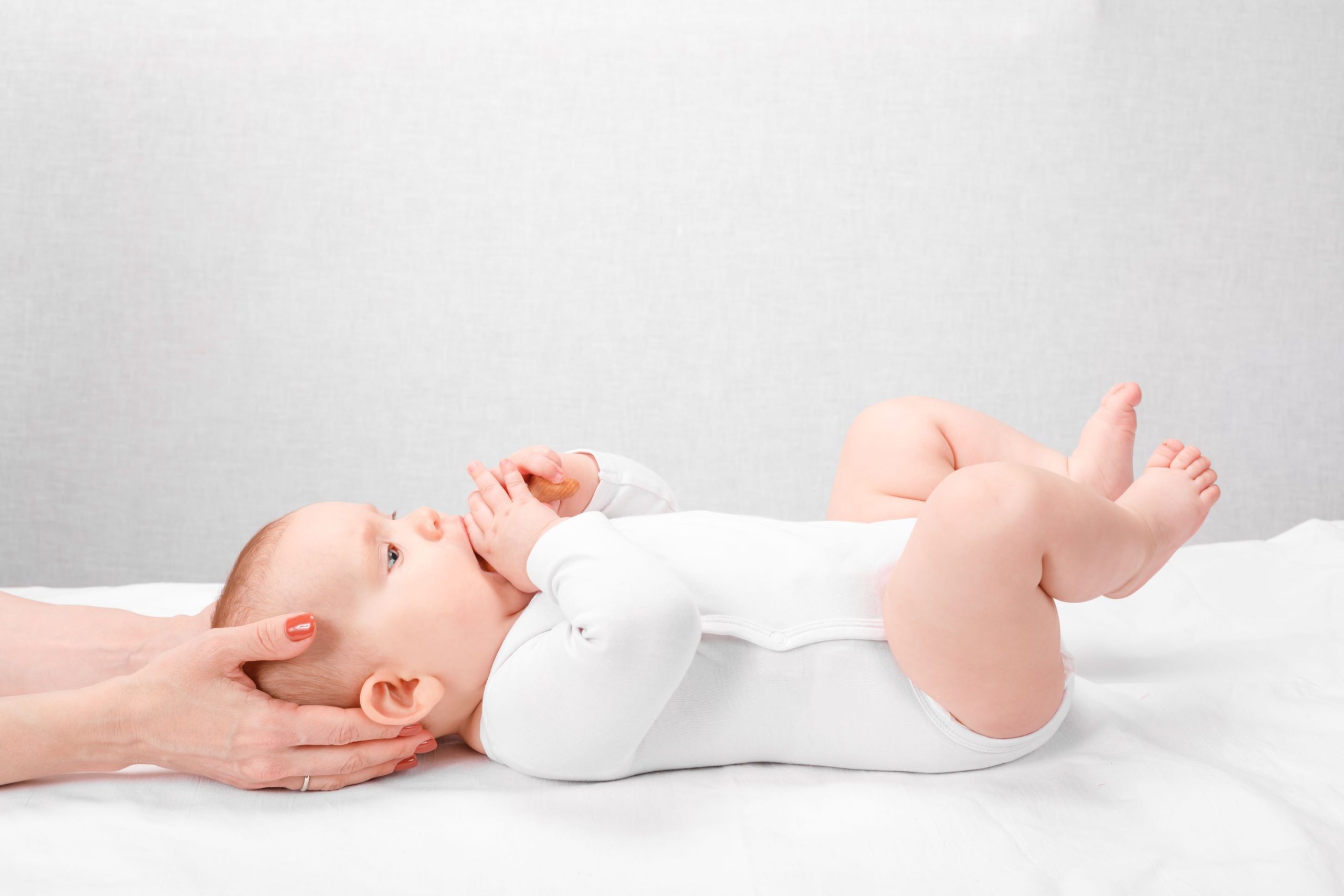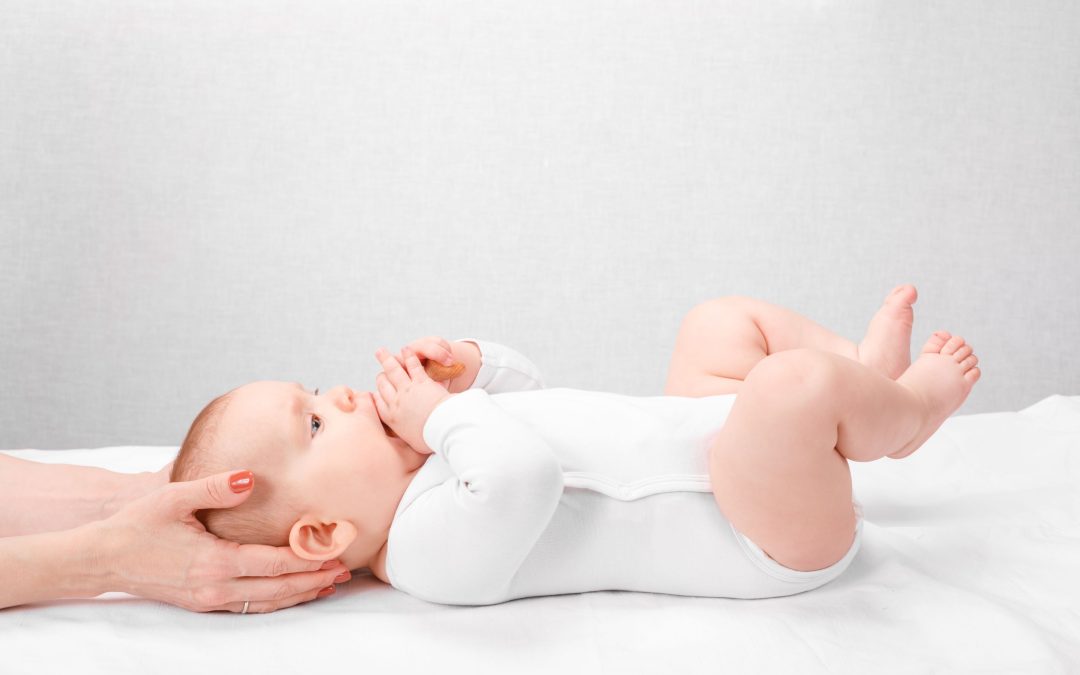It is not uncommon for newborns to have “unusually” shaped heads – most of the time this resolves by 6 weeks after birth.
What is plagiocephaly?
Plagiocephaly refers to a misshapen, flat or asymmetrical head shape. When babies are born, the joints of their head are not fused together and are much thinner and more flexible, so the head can change shape easily. Babies will spend a lot of their time on their backs in cots, car seats or prams. The pressure from these firm surfaces can leave a baby susceptible to developing flat spots on their skull if they lie with their head in the same position for too long. Plagiocephaly won’t affect the development of a baby’s brain. It is primarily only an issue of physical appearance.
Plagiocephaly can be linked to torticollis. Torticollis is a stiff neck that can be painful making it hard to turn the head. You may notice in a baby with torticollis that they prefer to look to one side. This relates to plagiocephaly as they typically develop a flat spot on the side of the head that they have a preference to turn towards.

What to expect when visiting our plagiocephaly clinic

- We will perform a thorough assessment of your baby’s face and head, looking for any signs of skull flatness and asymmetry. We will use the Severity Assessment for Plagiocephaly. This helps us to monitor your baby’s progress and guides our treatment strategies. It will also highlight the severity of your child’s plagiocephaly and if a referral to a specialist service is needed.
- We will screen your baby’s hips and feet to rule out other conditions such as positional talipes or hip dysplasia, which can be associated with conditions like plagiocephaly and torticollis.
- Additionally, we like to look at your baby’s development using a screening tool to detect and track early developmental delays. This assessment will compare your child’s development against the expected norms for different positions – tummy, back, sitting and standing.
How does physiotherapy help?
Education and repositioning strategies
- Infant positioning in sleep, play, and throughout the day.
- Different strategies when carrying your baby – when on their side, tummy or upright.
- Sometimes it is necessary to change the position of their cot in the room to encourage babies to vary the position of their head and neck according to what and who they are looking at. Your baby loves to look at you and at things that move. They will usually turn toward the light.
Exercises
- Age-appropriate exercises to help strengthen your baby
- Gentle movement exercises to help lengthen tight muscles
- Tummy time
- Using toys and other strategies to make exercises more fun for your baby.
Helmet therapy
- This is not often required. It is not considered prior to 6 months, and conservative management from a physiotherapist is always used prior to considering helmet therapy.
- Helmets could be fitted to your baby to allow for growth through the flat areas of your baby’s skull. For success they are required to be worn for 23 hours per day.
If you’re worried about your baby and they have some noticeable flattening or a preference to turn their head to one side, bring them into our clinic and have them assessed. Together we can identify the best treatment pathway for your baby to support their development.
Call us on 9481 2348 to book for our clinic.
Posted 8 November 2024

